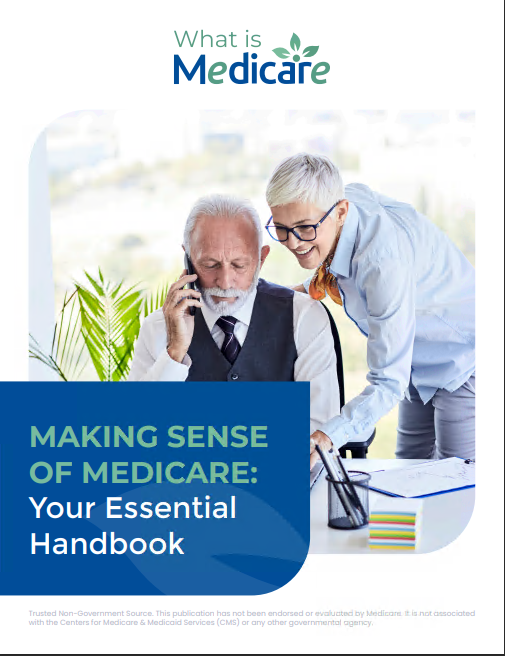Key Takeaways
- Federal retirees should evaluate their current prescription drug coverage under the Federal Employee Health Benefits (FEHB) program before considering Medicare Part D.
- Adding Medicare Part D to existing coverage can offer additional benefits, but it requires a careful analysis of the overlap and potential costs.
Federal Retirees with Prescription Drug Coverage: Should You Add Medicare Part D to the Mix?
As federal retirees approach Medicare eligibility, many are faced with the question of whether they should add Medicare Part D to their existing Federal Employee Health Benefits (FEHB) plan. Prescription drug coverage is a critical aspect of healthcare in retirement, and understanding how Medicare Part D works in conjunction with FEHB is essential to making the best decision. This article explores the key considerations retirees should keep in mind before adding Medicare Part D to their healthcare portfolio.
Understanding FEHB Prescription Drug Coverage
Federal retirees who are enrolled in the FEHB program often have robust prescription drug coverage as part of their health insurance plan. The FEHB program offers a variety of plans with prescription drug benefits, which generally include access to a nationwide network of pharmacies, mail-order options, and competitive copays for both generic and brand-name medications. These plans are comprehensive enough that, for many retirees, adding Medicare Part D may not seem necessary.
However, Medicare Part D offers a specific focus on prescription drug coverage, so it’s important to consider how the two plans interact and whether adding Medicare Part D offers any advantages.
How Medicare Part D Works
Medicare Part D is a federal program designed to help individuals with the cost of prescription drugs. It provides coverage for both generic and brand-name medications, operating through private insurers that offer a variety of plans. Part D is available to anyone eligible for Medicare, and it includes a tiered formulary system, where medications are grouped into tiers based on their cost and coverage.
While Part D helps cover a significant portion of prescription drug expenses, it does have its limitations, such as an annual deductible, premiums, and copays, which vary depending on the specific plan. The coverage also includes the infamous “donut hole,” a temporary limit on what the plan will cover for drugs after a certain threshold is reached, although this gap has been significantly reduced in recent years.
Do You Really Need Both FEHB and Medicare Part D?
For most federal retirees, the FEHB program provides sufficient prescription drug coverage. However, there are circumstances where adding Medicare Part D could be beneficial:
1. Coordination of Benefits
FEHB and Medicare Part D can coordinate benefits to cover a wider range of medications. This could be particularly useful if the FEHB plan has limitations or gaps in coverage for certain prescriptions. By adding Medicare Part D, retirees may reduce their out-of-pocket expenses for medications not fully covered under their FEHB plan.
2. Cost Protection
While the FEHB program offers robust prescription drug coverage, retirees who expect high prescription drug costs in the future may find that Medicare Part D provides an added layer of protection. Medicare Part D includes catastrophic coverage, which significantly reduces costs after a certain threshold is reached. This could help retirees who face the possibility of expensive medications in the future.
3. Late Enrollment Penalty
Medicare imposes a late enrollment penalty on individuals who do not sign up for Part D when they are first eligible unless they have “creditable” prescription drug coverage. Most FEHB plans are considered creditable, meaning retirees won’t face penalties for delaying enrollment in Medicare Part D. However, it’s important to double-check whether your specific FEHB plan qualifies, as a change in plan coverage could expose you to penalties later on.
Potential Downsides of Adding Medicare Part D
1. Duplicate Coverage
One of the primary downsides of enrolling in Medicare Part D while already having FEHB is the risk of duplicate coverage. Since both programs provide prescription drug coverage, paying premiums for both may not make financial sense if the benefits overlap significantly. Retirees need to evaluate whether the extra cost of Medicare Part D provides enough additional coverage to justify the expense.
2. Complexity of Claims and Reimbursement
Having both FEHB and Medicare Part D could complicate the process of filing claims and seeking reimbursements. While coordination of benefits is possible, retirees may find that managing two separate prescription drug plans adds administrative burdens. This could involve navigating different pharmacy networks, formularies, and reimbursement processes, potentially leading to confusion and delays in coverage.
3. Higher Premiums
By adding Medicare Part D, federal retirees may incur additional premium costs. While the specific premiums for Medicare Part D vary based on the plan and individual circumstances, retirees must consider whether the cost of these premiums is worth the additional coverage. In many cases, the prescription drug benefits provided by FEHB plans may be sufficient, meaning the added cost of Medicare Part D could be unnecessary.
When Adding Medicare Part D Might Be Worthwhile
1. High Prescription Drug Costs
For retirees with significant prescription drug needs, Medicare Part D might be a worthwhile addition. FEHB plans may impose limits on certain high-cost medications or impose higher copays, whereas Medicare Part D plans often have broader formularies or lower copays for expensive medications. In these cases, enrolling in Medicare Part D could help mitigate some of the costs of chronic or complex medication needs.
2. Specialty Medications
If you are taking specialty medications or have been prescribed drugs that are not fully covered by your FEHB plan, Medicare Part D may offer a solution. Many Part D plans have specific coverage options for specialty drugs, which are often high-cost medications used to treat complex conditions such as cancer or autoimmune diseases. Before enrolling, it is important to review both your FEHB plan’s coverage and the formulary of any prospective Medicare Part D plan.
3. Living in a Different State
If you are a federal retiree who lives part of the year in a different state, you might benefit from the wider network coverage offered by Medicare Part D. Some FEHB plans may have geographic restrictions on which pharmacies you can use, whereas Medicare Part D plans often have broader national networks. This can be particularly useful for retirees who spend part of the year in a different state or travel frequently.
Key Considerations Before Making a Decision
Before deciding to add Medicare Part D, federal retirees should take the following steps to ensure they make an informed choice:
-
Review Your Current FEHB Plan: Take a close look at your current prescription drug coverage under your FEHB plan. Check the formulary, copays, and out-of-pocket limits to see how well it meets your needs.
-
Assess Your Prescription Drug Needs: Consider your current and future prescription drug needs. Are you taking expensive medications now? Are you likely to need more prescription drugs in the future? The answers to these questions can help guide your decision.
-
Compare Medicare Part D Plans: If you decide to explore Medicare Part D, compare different plans to see what’s available. Be sure to check whether your medications are covered and what the costs will be, including premiums, deductibles, and copays.
-
Check for Creditable Coverage: Verify that your FEHB plan is considered creditable coverage under Medicare guidelines. This will prevent you from being penalized later if you decide to delay Medicare Part D enrollment.
Additional Resources for Federal Retirees
Federal retirees have access to a wealth of resources that can help them make informed decisions about their healthcare coverage. You can visit the Office of Personnel Management (OPM) website to review specific details about your FEHB plan. Additionally, Medicare.gov offers a Plan Finder tool that allows you to compare Medicare Part D plans based on your location and prescription drug needs.
Weighing Your Prescription Coverage Options
Ultimately, the decision to add Medicare Part D depends on your unique healthcare needs and financial situation. For many federal retirees, the prescription drug coverage provided by FEHB plans is sufficient, and adding Medicare Part D may not provide significant additional benefits. However, retirees with high prescription drug costs or specialty medication needs may find that Medicare Part D offers valuable supplemental coverage. Carefully reviewing your current plan and understanding how Medicare Part D works will help you make the best decision for your health and finances.
Contact Information:
Email: [email protected]
Phone: 5515556789










